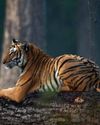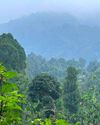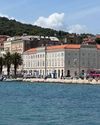
In recent times, the state has seen exponential growth in the number of domestic and international tourists, and tourism has emerged as one of the principal drivers of the state’s economy. One such prominent tourist destination in the state that is renowned for its rich history is the city of Murshidabad, located on the eastern banks of River Bhagirathi approximately 210.4 km north (via NH12) from the state capital Kolkata. From 1704 (when Nawab Murshid Quli Khan moved the regional capital to Muksudabad from Dacca) to 1757 (when the infamous Battle of Plassey robbed the Nawabs of their powers), Murshidabad served as the administrative seat of the Nawabs, who ruled over the Mughal Empire’s wealthiest province (consisting of the present-day Bengal, Bihar, Jharkhand, and Odisha), and accounted for about 50% of the empire’s GDP. Such was the beauty of the settlement, that Robert Clive on entering Murshidabad after the Battle of Plassey commented, “The city of Murshidabad is as extensive, populous, and rich as the city of London, with this difference, that there are individuals in the first possessing infinitely greater property than in the last city. The inhabitants, if inclined to destroy the Europeans might have done so with sticks and stones.”
This story is from the {{IssueName}} edition of {{MagazineName}}.
Start your 7-day Magzter GOLD free trial to access thousands of curated premium stories, and 9,000+ magazines and newspapers.
Already a subscriber ? Sign In
This story is from the {{IssueName}} edition of {{MagazineName}}.
Start your 7-day Magzter GOLD free trial to access thousands of curated premium stories, and 9,000+ magazines and newspapers.
Already a subscriber? Sign In

National Parks Of India
India is blessed with a rich tapestry of biodiversity that is both a natural heritage and a national treasure. The concept of national parks in the country traces back to the late 19th century when the importance of conserving wildlife began to take root in the consciousness of the colonial administration. The first national park in India, Hailey National Park (now known as Rajaji National Park), was established in 1936, marking a historic commitment to wildlife conservation. The post-independence era saw an exponential increase in protected areas, primarily driven by a need to conserve India’s unique flora and fauna threatened by rampant industrialization and urbanization.

10 Fascinating Wildlife Sanctuaries
TO EXPLORE THE WILD SIDE OF INDIA

Conversation with the "BOOK MARKETING GIRL"
In an age where digital advancements and artificial intelligence often overshadow traditional practices, two visionaries have chosen a different path.

FARM AAVJOSAA - HER STORY
“Riddhi was a whirlwind of energy, unable to endure even a minute apart from her twin, Siddhi.

FOOD MEETS FANTASY IN CROATIA
As the sun dipped below the horizon, casting a warm golden glow over the rolling hills of Croatia, Foodpreneur Debaditya Chaudhury found himself on a gastronomic adventure that promised to tantalize his taste buds and inspire his culinary creativity.

THE UNTAMED BEAUTY OF SATPURA TIGER RESERVE
In Conversation with L. Krishna Moorthy, The Field Director of Satpura Tiger Reserve

SUNDARBANS THROUGH THE DECADES
As Witnessed By Anil Mistry, The Swamp Tiger Rescuer

LOOK EAST - WILDLIFE AND TOURISM IN THE NORTHEAST OF INDIA.
The North East of India is an ecological and biodiversity hotspot. Diverse habitats and ecosystems - each with its own species of birds, animals and plants – make this region home to an abundance of flora and fauna.

KAZIRANGA NATIONAL PARK AND TIGER RESERVE
There is a mad frenzy for travelling in recent times. Everywhere you look, read, or hear, people travel worldwide, domestic, offbeat travel has become a trend.

CORBETT NATIONAL PARK: A Legacy of Conservation and Biodiversity
From the moment I set foot in the enchanting and tranquil realm of Corbett National Park, a deep connection was forged in my heart.